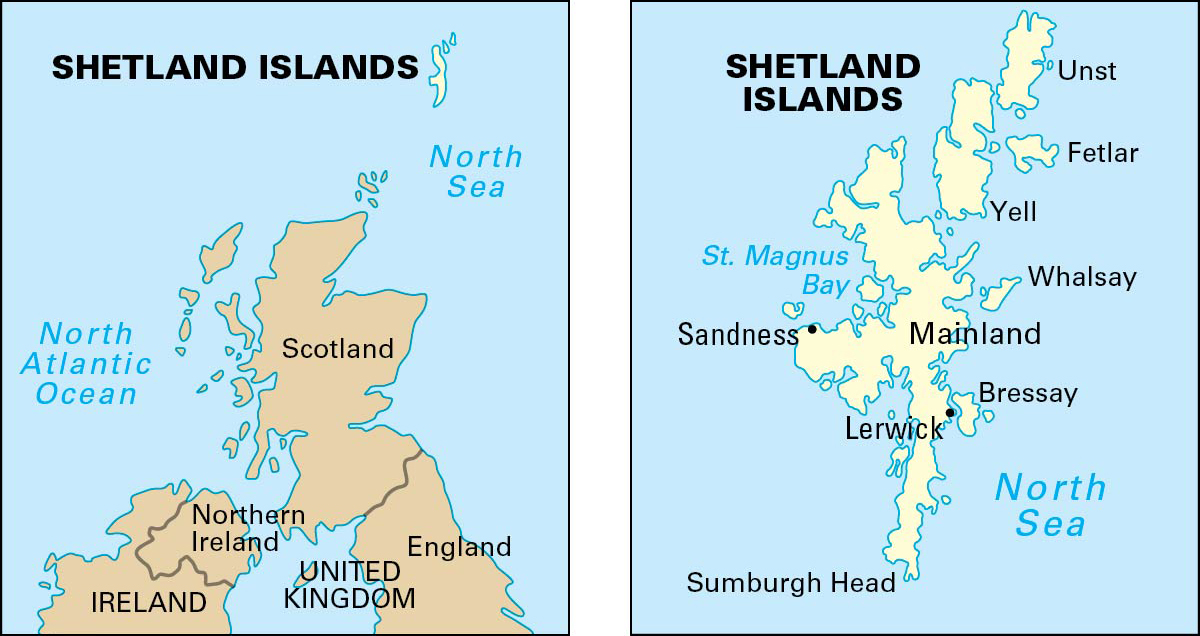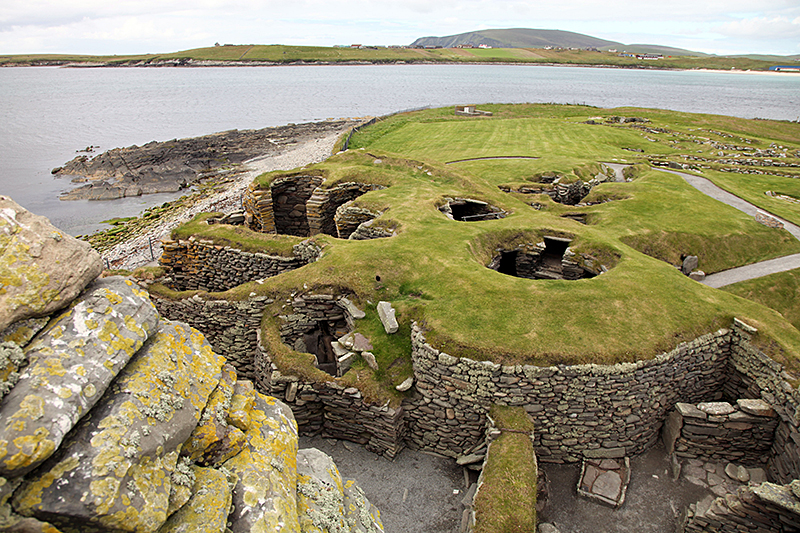Shetland Islands (pop. 22,986) make up the northernmost part of Scotland and the United Kingdom. The Shetland Islands make up a single council area, the primary unit of local government in Scotland. Sometimes called the Zetland Islands, they lie in the Atlantic Ocean, near the North Sea. The islands lie about 100 miles (160 kilometers) north of the Scottish mainland and about 200 miles (320 kilometers) west of Norway.

The Shetland Islands consist of about 100 islands, but people live on fewer than 20 of them. The islands have a total land area of 566 square miles (1,466 square kilometers). Mainland is the largest island in both area and population. Most Shetlanders are of Scandinavian ancestry.
Oil production from nearby wells in the North Sea brings much wealth to the Shetland Islands. The islands have a huge oil tanker terminal and bases that service offshore drilling operations. A fishing industry based in Lerwick, the largest town, forms a major part of the islands’ economy. The islanders also raise world-famous Shetland ponies and Shetland sheep. Many women of the islands knit the soft, fine wool of the sheep in famous patterns called Shetland and Fair Isle. Farming is difficult because the islands have a damp, windy climate and poor soil. But the wild natural beauty of the Shetland Islands attracts many tourists, especially in midsummer when daylight occurs almost around the clock.


Archaeological evidence indicates that people lived in the Shetland Islands as long as 4,000 years ago. Vikings from Norway conquered the islands in the A.D. 800’s. Norway ruled them from then until the late 1400’s. Scotland acquired the islands in 1469, when King James III of Scotland married Princess Margaret of Norway and Denmark.
